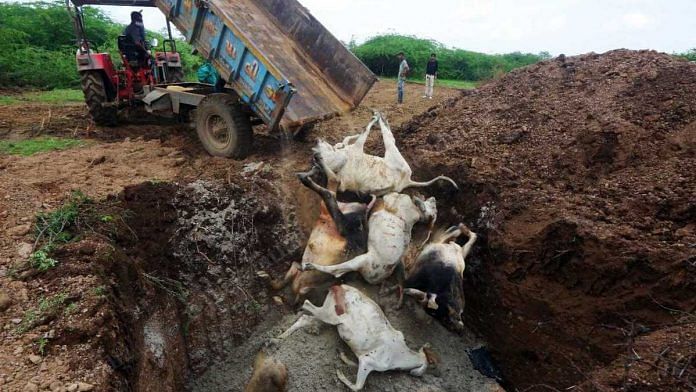New Delhi/Ahmedabad: Lumpy skin disease, a viral infection that affects cows and buffaloes, has claimed the lives of an estimated 67,000 cattle since July this year, upended the livelihoods of thousands of families, and cast a pall on entire villages where sights of carcasses rotting on the streets, mass graves, and the bellows of suffering animals have become common.
There have been outbreaks before, starting in 2019 when the “transboundary” disease was first reported in India, but none have been quite as devastating as this one.
The lumpy skin disease virus (LSDV) — which belongs to the same family of poxviruses that cause monkeypox — cannot infect human beings, but has wreaked havoc in Gujarat, Rajasthan and Punjab, and also affected pockets of Haryana, Himachal Pradesh, and other states.
Given that India is the largest producer of milk in the world, the spread of LSDV across the cattle population has seriously impacted the agrarian economy as well as the livelihoods of dairy farmers due to lowered milk production and trade restrictions.
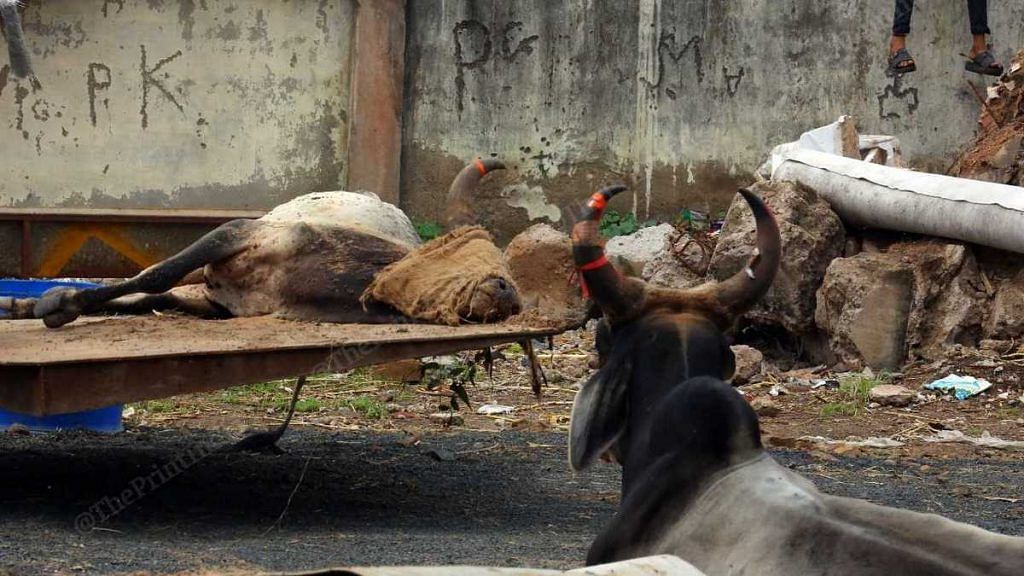
It is also time-consuming and difficult to tend to the affected cattle. The clinical symptoms include nasal discharge, followed by high fever and a sharp drop in milk yield. Animals then develop lumps of 10-50 mm on their skin and swollen feet. Painful ulcerative lesions in the eyes, which could lead to blindness, and pox lesions on internal organs are also characteristic of the disease.
Earlier, the World Organisation for Animal Health (WOAH) had pegged the mortality rate at 1 to 5 per cent, but this year’s outbreak in India has been more lethal. It is believed the mortality rate could be as high as 15 per cent.
So, what changed?
According to experts, numerous factors have combined to create a perfect storm — a new variant of the virus, the effects of climate change, excess rainfall leading to an increase in vectors, like mosquitoes, that spread the infection, and certain dairy farming practices that leave cattle more vulnerable.
Also read: How ICAR grew 50 generations of virus over 1.5 years to develop lumpy skin disease vaccine
Contagion and climate change
Lumpy skin disease spreads through blood-feeding insects, such as mosquitoes or ticks. It can also spread through flies that sit on the eye and nasal discharge of infected animals. Usually, the number of cases rise during monsoons, when the number of vectors also increase.
Typically, LSD outbreaks occur in epidemics several years apart. The existence of a specific reservoir for the virus is not known, nor is how and where it survives between epidemics. Outbreaks are usually seasonal but may occur at any time because in many affected regions, no season is completely vector-free.
Climate change is also believed to play a part in the spread of LSD.
“There are reports of international transport of disease because of changes in wind velocity and directions — a part of climate change. When the winds changed, the insects carrying the virus are believed to have been redistributed to previously uninfected countries,” Dr Rathish R.L., Assistant Professor, department of veterinary epidemiology and preventive medicine at the Kerala Veterinary and Animal Sciences University, Pookode, had told ThePrint in an earlier interview.
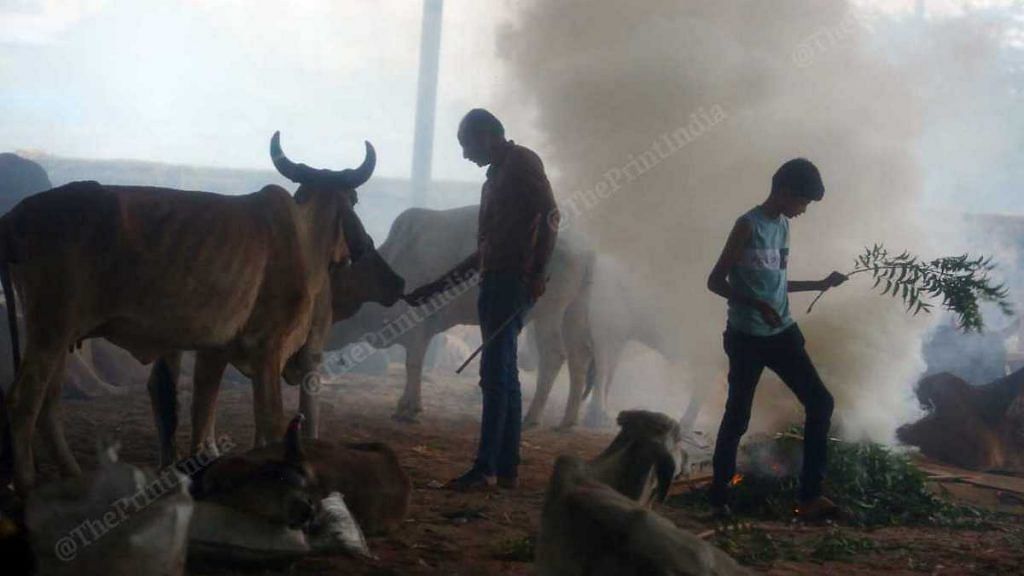
At present, the animals in India are being given the goat pox vaccine to provide them with some degree of protection, but the contagion has spread despite ramping up inoculation efforts.
Currently, treatment focuses on managing the symptoms of the disease and preventing secondary infections that can worsen the animal’s health.
Hopes now hinge on an indigenous LSD vaccine called Lumpi-ProVaC. In development since 2019 by two Indian Council of Agricultural Research institutes, it has successfully completed field trials and was launched last month. The vaccine is expected to become commercially available soon.
How did the lumpy skin disease come to India?
The first outbreak of lumpy skin disease was reported in Zambia in 1929 and it remained restricted to the sub-Saharan region until 1990, after which it slowly spread to new territories starting with North Africa, West Asia, and Turkey.
Since 2015, it has been reported in most of the Balkan countries, the Caucasus, and the Russian Federation, where the disease “continues to spread despite implemented prevention and control efforts”, according to experts at the UN’s Food and Agriculture Organization. It has also been reported in China.
In 2019, the disease spread to Bangladesh, from where, it is believed, it entered the eastern Indian states of Odisha and West Bengal.
Genomic sequences of virus samples isolated from Ranchi in 2019 showed that the strain was closely related to the strains from Kenya — as were the strains prevalent in Bangladesh.
Significantly, the most recent sequencing efforts carried out on samples from Rajasthan revealed that the strain behind the 2022 epidemic is not related to the one circulating in India earlier.
New fast-mutating variant, and a Pakistan connection?
Weeks before infections were reported in Gujarat and Rajasthan, there was an outbreak of lumpy skin disease in Pakistan’s Sindh province, leading to speculation that the virus variant there had crossed the border to India.
However, according to experts in the neighbouring country, Pakistan’s first case was detected earlier, in September 2021, but confirmed as LSD only in March. They also suggested that the virus spread to Pakistan from India.
In August 2021, notably, there had been an LSD outbreak in Gujarat and Maharashtra, but mortality was reportedly low.
“We had more than 40,000 cases in Kaira district last year, reaching its peak during July and August last year. However, deaths were less than 1 per cent,” H.S. Rathod, Administrative Head of the Gujarat Cooperative Milk Marketing Federation (GCMMF), had earlier told ThePrint.
Currently, it is not known where the new variant in India came from, but a yet-to-be peer reviewed gene sequencing study, conducted by the Council of Scientific and Industrial Research-Institute of Genomic and Integrative Biology (CSIR-IGIB), found that the virus circulating this year appears to have a distinct lineage.
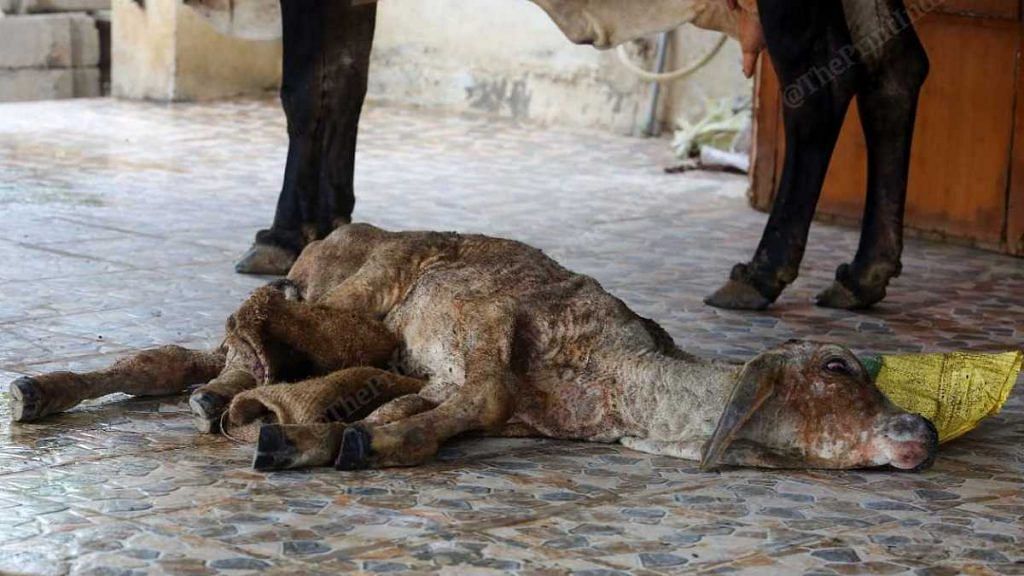
Not only that, the research also revealed different variants of the virus infecting the same animal — suggesting the virus was undergoing mutations inside the host.
“Analysis of the six viral isolates shows that the genomes from the 2022 outbreak of the disease form contain a large number of genetic variants as compared to previous genomes available in the public domain,” the authors wrote.
This is contradictory to the earlier understanding that LSDV is a virus that is very stable, and mutates very slowly.
However, a fast-mutating variant is unlikely to be the only reason for the rampant spread of the disease, and several local factors also come into play.
Incessant rains = more vectors
The Kutch (or Kachchh) region of Gujarat has been described as the “epicentre” of the LSD outbreak in India. In July this year, the region had faced flood-like conditions after receiving its heaviest rainfall in seven years.
High rainfall is associated with a rise in the number of vectors like mosquitoes and flies, which can increase the spread of the disease.
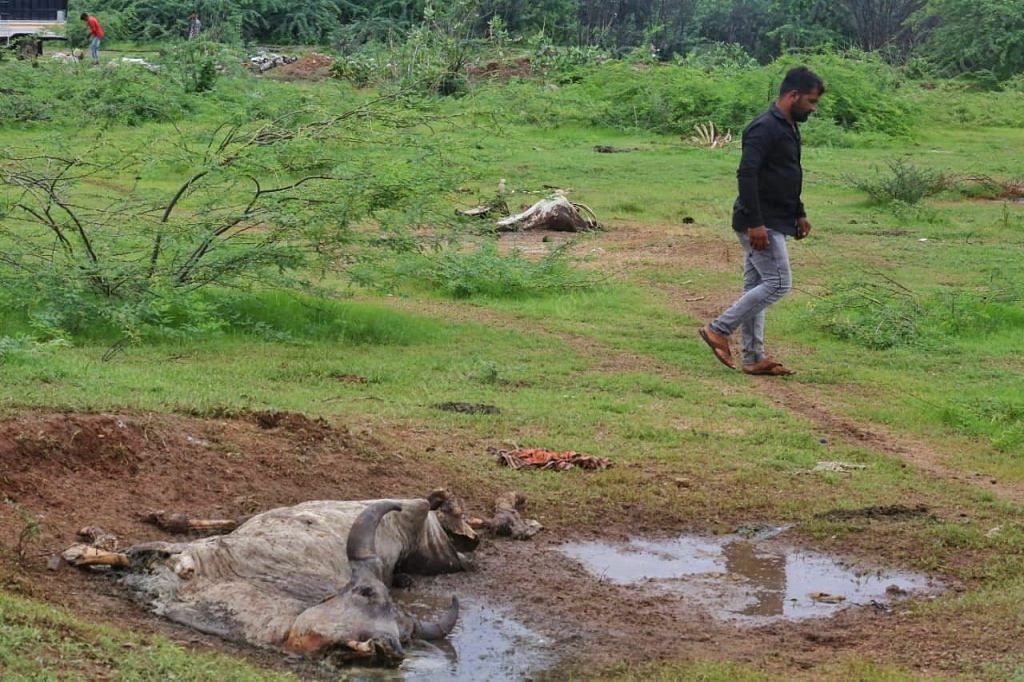
“There were sporadic cases of LSD for the past few months. However, after the monsoons, the vector population increased and the disease began to spread rapidly,” said Dr Nikhil Modi, a veterinarian with a mobile veterinary dispensary in Kutch district.
“Not only does the increased rainfall make it difficult to control mosquitoes, the humidity has been making it difficult for us to treat the animals. The open wounds take longer to heal and make the animals susceptible to secondary bacterial infections,” he added.
Open grazing
When ThePrint visited Mathak village in Kutch last month, an evening routine would play out daily. At around 6pm, just before sunset, villagers would collect under a banyan tree to receive their cattle who would return after grazing in the nearby open fields.
This pastoral scene had one fatal flaw: the herds included healthy cows as well as animals with visible symptoms of lumpy skin disease. These animals were sent out to graze and drink together, and would then later spend the night in a common village gaushala (cowshed).
Mathak is not the only such village. Several areas that ThePrint visited had such a system.
“Kutch is a place where cattle-rearing is based on a zero-input open-grazing system. If the cattle is milk bearing, then the family might spend a little on supplementary nutrition, but apart from that there is no expenditure on cattle nutrition,” Haresh Thacker, Deputy Director of Animal Husbandry, in Kutch told ThePrint.
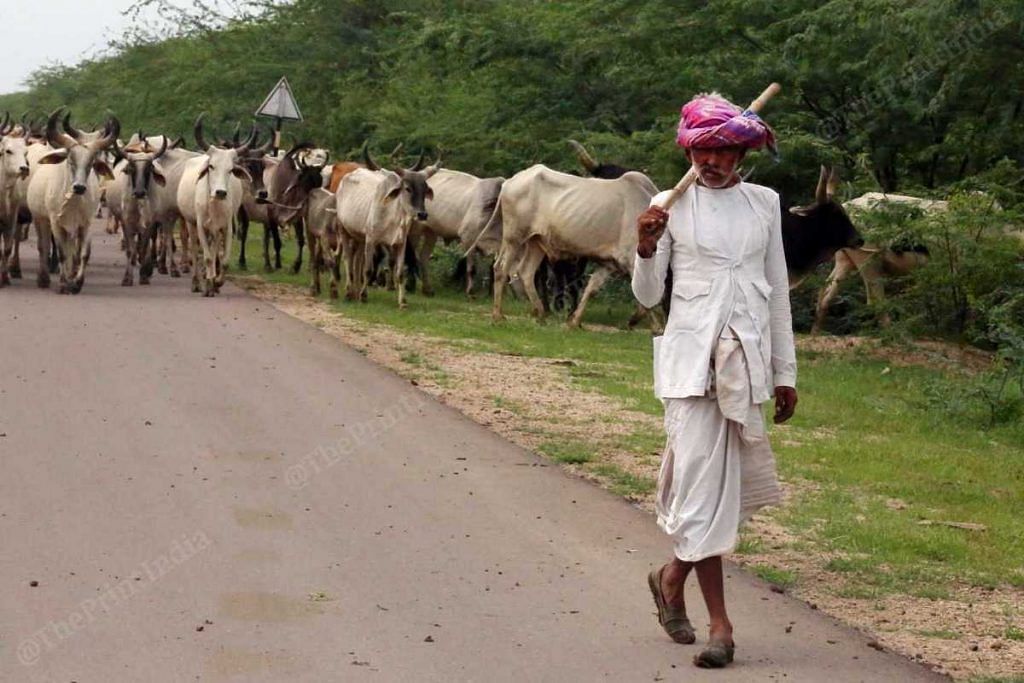
The impact of the open-grazing system is twofold for disease epidemiology.
First, deficiency in nutrients impairs the immune system of the cattle, making them more prone to diseases. Secondly, when healthy and infected animals eat and stay together, it is difficult to contain the spread of disease.
According to Thacker, grazing can also make sick animals sicker. “Infected animals need rest. When they go out to graze, they have to walk several kilometres. They get stressed, leading to more severe disease, also exposing all the other cattle in the village,” he said.
Cattle straying is yet another issue associated with open grazing.
In Mithi Rohar, Yusuf Nur Mohammed had been waiting for several days for his cows to come back. “They went out for grazing and have not returned from the fields since. I have sent my children to look for them,” he said.
This is not unusual for infected cattle since LSD can cause their feet to swell, leaving them unable to stand.
Through the highways and city streets of Kutch, ThePrint came across several such diseased animals unable to get back on their feet.
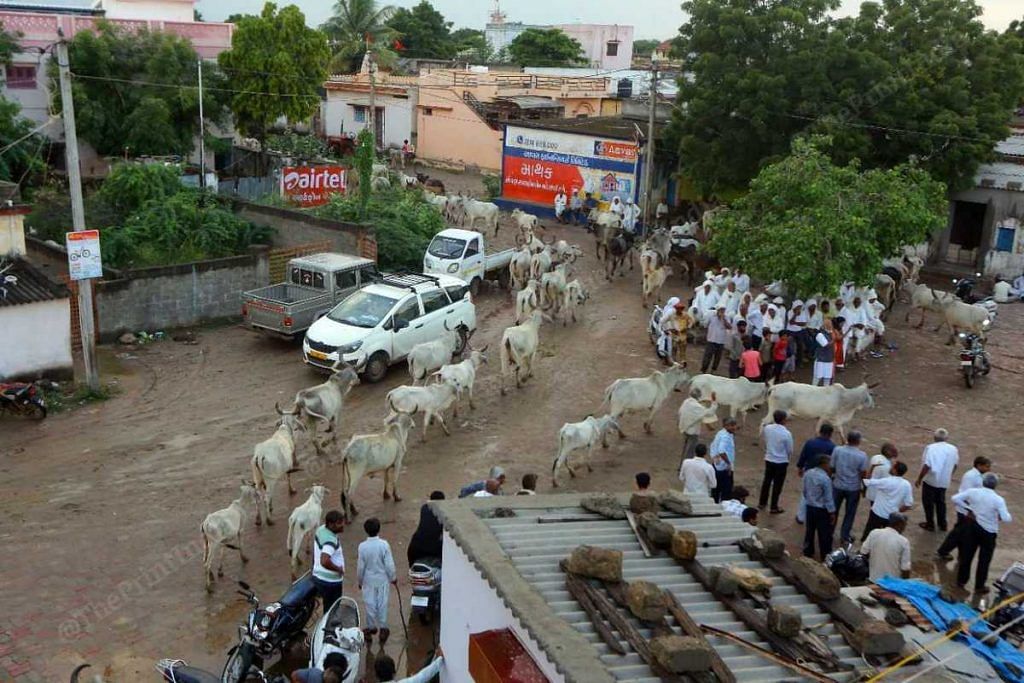
Stray cattle and gaushalas
For at least seven years, Gujarat has been struggling with how to deal with its increasing population of stray cattle. While many roam free on the roads, others are crammed into gaushalas. The situation is similar in Rajasthan.
“Animals in the city are among the worst affected. The stomachs of these animals are filled with plastic. Their nutritional and immunological status is not high,” said Thacker.
Several gaushalas across districts in both states ThePrint visited were home to hundreds of cattle.
At Mohan Gaushala in Rajasthan’s Barmer district, for instance, almost all of the 400 cows had been infected with LSD and over 50 had already died, said Jitendra Dev, who heads a team of volunteers to look after the animals.
The premises are clean and well maintained, and the cattle are tended to by a dedicated group of men, but none of this has offered protection against LSD.
“Most of the animals have recovered, but several were badly affected. The disease started spreading very quickly, and by the time we noticed the symptoms, all of the cattle had been exposed,” Dev said.
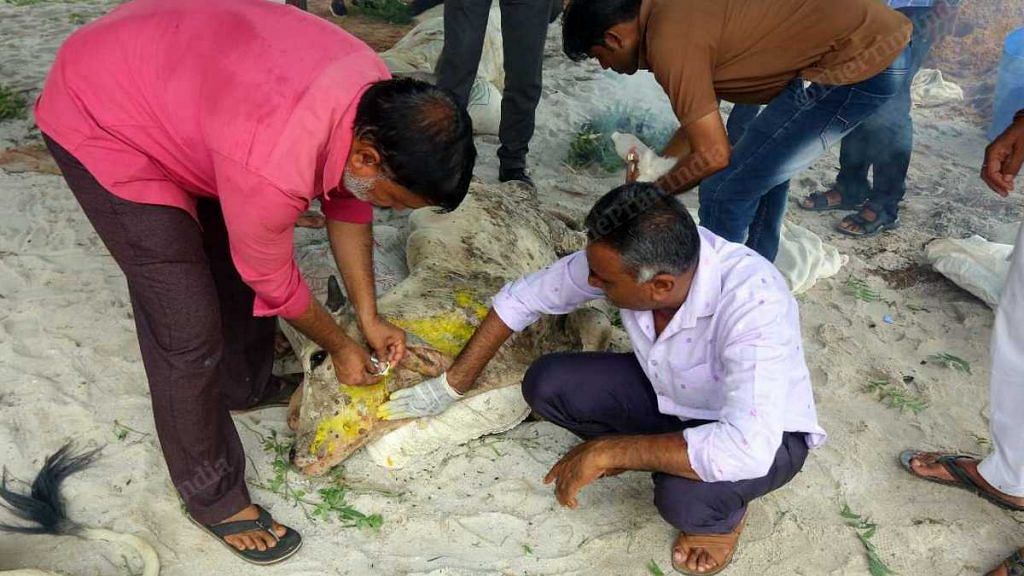
Animals can take up to two weeks to recover from LSD, but if the lumps burst, the open wounds can extend the process.
It was much the same story at a well-funded gaushala in Bhachau district of Gujarat. The hundreds of animals were well taken care of, but housed together, leading to a rapid spread of the disease.
Challenges in managing the disease
Managing an LSD outbreak requires huge human effort. If the animals are stall-fed, it is easier to monitor animals and manage their symptoms.
“Treatment is only a job of five minutes — whatever injections need to be given are done in a few minutes. However, the disease management takes up the entire day, which is where the help of the local community has been very valuable,” said Thacker.
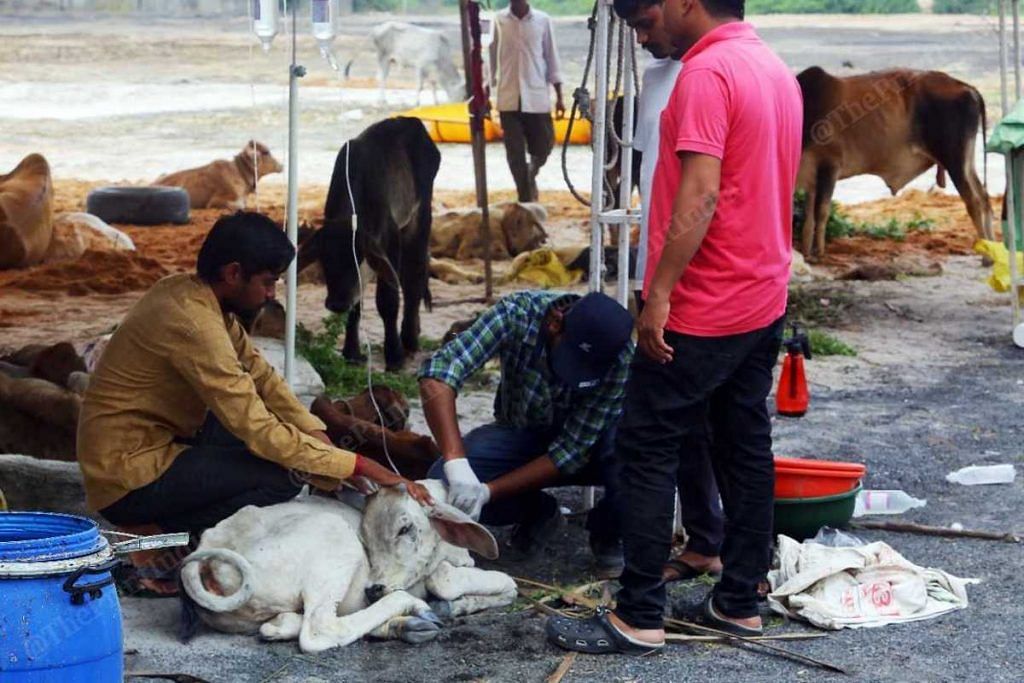
In the beginning of the outbreak, whenever a case was detected in villages across the Kutch region, a drummer would go around warning all the villagers to keep their cattle tied in their homes for at least a few days.
“We would then vaccinate the cattle, and ask them to keep the cattle tied for at least a week,” Thacker said. “Actually, total immunity develops after 21 days. But if we ask them to keep their animals tied in for that long, they will not believe us.”
In Udaipur, ThePrint found that villagers continued to keep their infected cattle with the healthy ones, despite repeated warnings from a team of veterinarians.
Also read: In Kutch camps, sick cows gnash teeth, flies cover wounds, as they wait to die of lumpy skin disease
Open disposal of carcasses
At the beginning of the outbreak, cattle that had died of the disease were disposed of in open grounds, exposed to scavengers and vectors alike.
When ThePrint visited Gujarat and Rajasthan, several infected carcasses were seen lying on the roadside.
Moreover, volunteers working at gaushalas told ThePrint that municipal bodies dumped several carcasses — left to rot for days — in open spaces near the cities, where stray cattle often went to graze.
In some places, like Samakhiali in Gujarat, the burial pits where the animals were dumped were shallow, and had been dug out by dogs, attracting flies, which are known vectors.
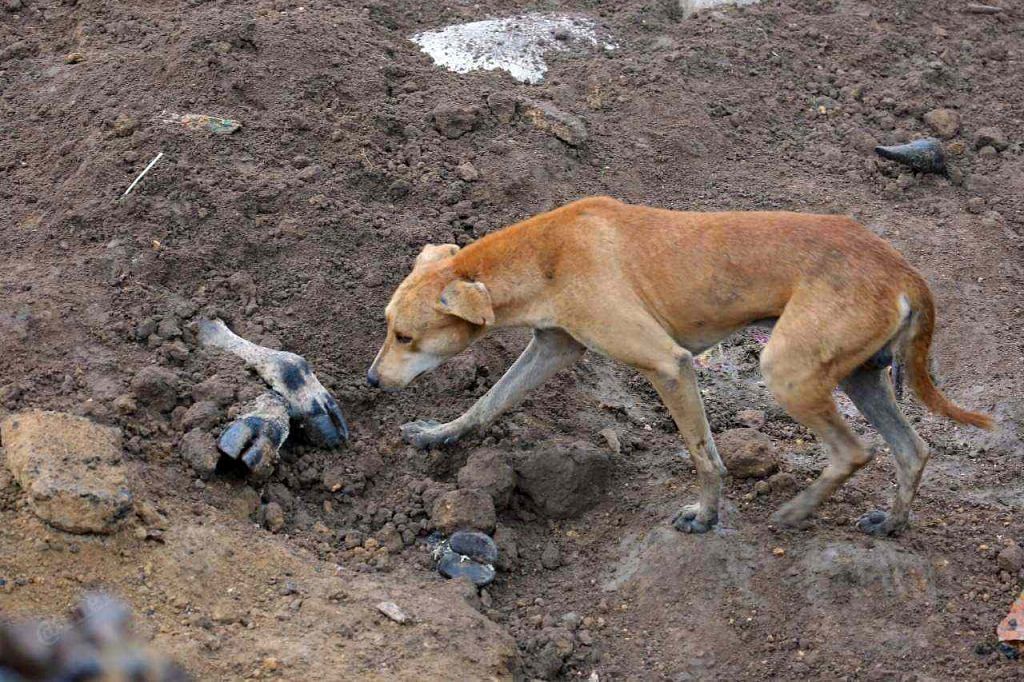
How ‘milk capital’ prevented disease spread
Even as LSD raged across Gujarat, the district of Anand, known as the milk capital of India saw very little impact on its milk production, R.S. Sodhi, Managing Director of the Gujarat Cooperative Milk Marketing Federation Ltd or Amul told ThePrint.
Milk from infected cows is considered safe for human consumption since the disease is not zoonotic (transmitted between species). However, LSD reduces milk yield.
In Anand, even if animals fell sick, they tended to not be as gravely affected as those in many other parts of the state.
According to Dr Sanjay Patel, CEO of Amul’s Research and Development division, decades of investment in the animals’ health, disease reporting infrastructure, and vaccinations helped Anand escape the full impact of the disease.
For decades, veterinarians have also been training the villagers on how to keep the cowsheds clean and the animals pest-free.
“Unlike the rest of Gujarat, where farmers keep indigenous cows for personal dairy needs, Anand dairy farmers have hybrid cattle. Ideally, they should be more susceptible to the disease,” Patel said. “But since these cows are more expensive, the farmers do not let them out for grazing. They are all stall fed, reducing their risk.”
Last year, he said, all the animals were vaccinated with the goat pox vaccine.
Artificial insemination experts in the district also double up as first responders when a case is reported in a village. As a result, the infections are detected at an early stage, preventing further spread.
H.S. Rathod of GCMMF added that the nutritional profile of the cattle was also better than those at gaushalas or on the street.
“Just like in humans, well nutritioned cattle are able to fight the disease better. At gaushalas, the cattle may be well fed, but they often do not get the nutritional supplements that cows reared for dairy get in Anand,” Rathod added.
Towards tracing the spread
The most robust way to understand how the disease spreads is through genomic sequencing. Tracking changes in the genes of the virus from different locations is akin to following footprints and can throw light on how the disease spreads.
However, it was earlier generally assumed that it was not possible to track the LSDV’s farm-to-farm spread by sequencing the virus samples.
Poxviruses are DNA viruses, which typically have a slower rate of mutations compared to RNA viruses like SARS-CoV-2. In fact, veterinarians who were working on the ground in Rajasthan and Gujarat told ThePrint that since significant mutations were not expected to occur in the poxviruses, the efforts to sequence samples had been minimal.
However, the CSIR-IGIB research mentioned earlier found a large number of mutations in the currently circulating lineage. A faster mutation rate would allow for scientists to trace its spread. The mutations may also have an impact on vaccine efficacy, infection rates and disease severity.
The researchers from CSIR-IGIB noted that due to the limited number of genome sequences available for LSDV, the source of the outbreak has not been traced — although state veterinary departments are keeping track of the disease outbreak, there has been no coordinated effort to sequence the samples.
The researchers further suggest that additional genomes for the virus could help uncover potential outbreaks and connect existing outbreaks that are seemingly unrelated.
“Put together, the study iterates that genomic surveillance for characterising circulating strains of important transboundary infectious agents during ongoing outbreaks, such as LSD, is essential for early detection of the disease as well as for formulating interventions for disease control,” the unpublished paper said.
This is the sixth in a six-part series on lumpy skin outbreak across Gujarat and Rajasthan.
(Edited by Asavari Singh)
Also read: ‘Kumkum, red drape, prime plot’: Kutch village goes all out for cows killed by lumpy skin disease


